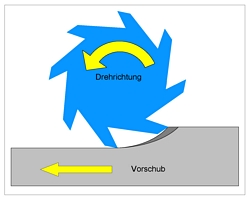Milling Machines
A milling machine is a machine tool used to machine solid materials. Milling machines are often classed in two basic forms, horizontal and vertical, which refers to the orientation of the main spindle. Both types range in size from small, bench-mounted devices to room-sized machines. Unlike a drill press, which holds the workpiece stationary as the drill moves axially to penetrate the material, milling machines also move the workpiece radially against the rotating milling cutter, which cuts on its sides as well as its tip. Workpiece and cutter movement are precisely controlled to less than 0.001 in (0.025 mm), usually by means of precision ground slides and leadscrews or analogous technology. Milling machines may be manually operated, mechanically automated, or digitally automated via computer numerical control.
Milling machines can perform a vast number of operations, from simple (e.g., slot and keyway cutting, planing, drilling) to complex (e.g., contouring, diesinking). Cutting fluid is often pumped to the cutting site to cool and lubricate the cut and to wash away the resulting swarf.


1.) picture: counter milling / 2.) picture: climb milling
Source: Tobias Gaschnitz {{Information| |Description= Gegenlauffräsen |Source= Selbst erstellt |Date= 2006-05-12 |Author= Tobias Gaschnitz }} / URL: http://de.wikipedia.org/wiki/Fräsen (10th of October 2012)
Quelle:
Wikimedia Foundation Inc.
Wikipedia / Titel: Fräsmaschine/ URL: http://en.wikipedia.org/wiki/Milling_machine (26. November 2012)
The content and technical details are without warranty. (Source see source index)
